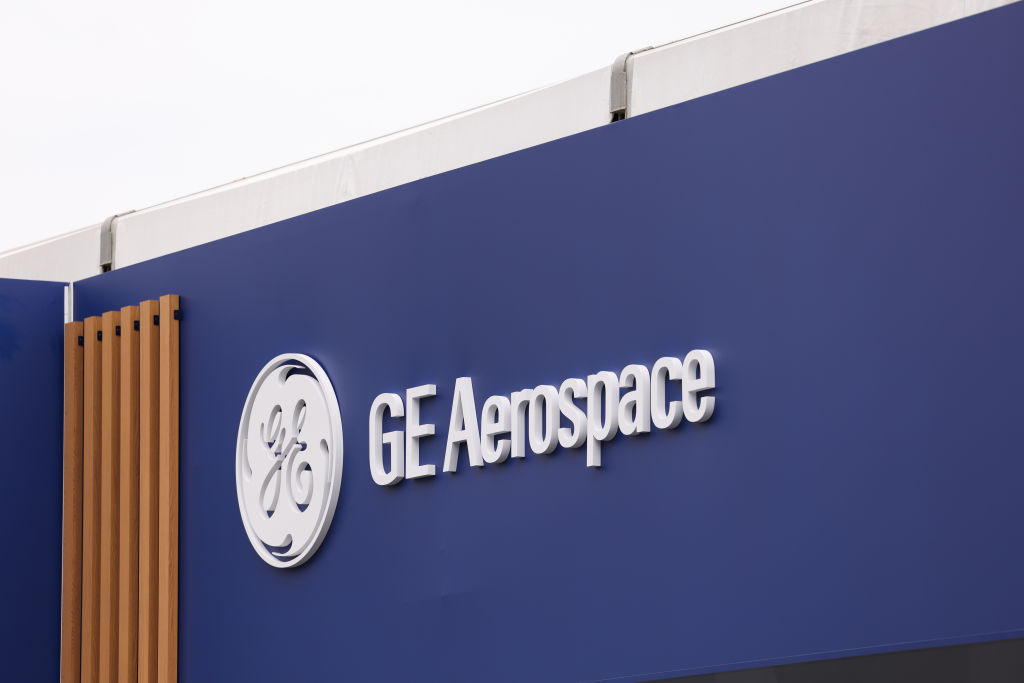General Electric: New Energy?
This household name wants to excite investors and spur growth by meeting the world's need for more-efficient and cleaner sources of energy.
General Electric may be one of the world's mightiest companies, but so far this century the stock has been a dud. The shares are down about 46% since peaking in 2000. The slide reflects a compression of GE's once lofty price-earnings ratio and coincides with a period of tepid profit growth. Between 2000 and 2005, GE's earnings climbed only 33%.
To spur growth and excite investors, GE wants to develop businesses aimed at meeting the world's need for more-efficient and cleaner sources of energy. The strategy, dubbed "Ecomagination," has yet to catch on with most investors. But Citigroup analyst Jeffrey Sprague sees opportunity in the market's apathy and considers GE (symbol GE) a top play on global infrastructure demand.
Opportunities in emerging markets are particularly exciting. China is the world's second-largest consumer of energy, behind the U.S., and has the fastest-growing rate of consumption. GE's energy unit sold $5 billion worth of equipment to China last year. Some investors perceive the Chinese market competing more on price than quality, Sprague says. But when the government is buying infrastructure, it wants the top of the line. For example, China was the first customer to buy GE's new 9FA gas turbine technology.

Sign up for Kiplinger’s Free E-Newsletters
Profit and prosper with the best of expert advice on investing, taxes, retirement, personal finance and more - straight to your e-mail.
Profit and prosper with the best of expert advice - straight to your e-mail.
GE is also a player in nuclear energy. The Energy Information Administration projects world electricity consumption will double over the next two decades. This means that China and its enormous energy-hungry neighbor, India, must harness the power of the atom to sustain their economic growth.
GE is in a race with Westinghouse, which was recently purchased by Toshiba, to supply the next generation of nuclear reactors to new and existing power plants. The Nuclear Regulatory Commission has already approved Westinghouse's reactor. Sprague says that it's unlike that GE will win approval for its new reactor until 2010, but utility companies, including Entergy and Dominion Resources, have nonetheless decided to go with GE's reactor design. GE's nuclear business now generates about $1 billion per year in sales, mostly for fuel and services for existing power plants.
If atomic energy doesn't spark your enthusiasm, GE plans to offer customers greener options, including coal gasification and wind power. Coal gasification generates power more efficiently and creates less pollution than traditional coal plants. But price has always been a hurdle. GE, with the help of engineering firm Bechtel, wants to standardize the design of coal gasification plants to make them more affordable for utilities. GE also is working with American Electric Power to construct its first U.S. coal gasification plant, in southern Ohio.
GE bought Enron's wind-power business in 2002 to enhance its portfolio of environmentally friendly businesses. Last year, wind-turbine sales grew more than 200%, to $2.5 billion.
Sprague recently raised earnings estimates for GE through 2008. For 2006, he boosted his estimate by 2 cents a share, to $2. The stock, recently $35, trades at a bit less than 18 times 2006 earnings estimates.
-- Thomas Anderson
Get Kiplinger Today newsletter — free
Profit and prosper with the best of Kiplinger's advice on investing, taxes, retirement, personal finance and much more. Delivered daily. Enter your email in the box and click Sign Me Up.
-
 Stock Market Today: Stocks Gain on Tech, Auto Tariff Talk
Stock Market Today: Stocks Gain on Tech, Auto Tariff TalkThe Trump administration said late Friday that it will temporarily halt tariffs on some Chinese tech imports.
By Karee Venema
-
 Sam's Club Plans Aggressive Expansion: Discover Its New Locations
Sam's Club Plans Aggressive Expansion: Discover Its New LocationsSam's Club expansion plans will open up to 15 new stores each year. Learn where they plan to open in 2025.
By Sean Jackson
-
 Fed Leaves Rates Unchanged: What the Experts Are Saying
Fed Leaves Rates Unchanged: What the Experts Are SayingFederal Reserve As widely expected, the Federal Open Market Committee took a 'wait-and-see' approach toward borrowing costs.
By Dan Burrows
-
 Is GE Aerospace Stock Still a Buy After Earnings?
Is GE Aerospace Stock Still a Buy After Earnings?GE Aerospace stock is higher Thursday after the industrial firm topped analysts' fourth-quarter expectations and issued a strong full-year outlook. Here's what you need to know.
By Joey Solitro
-
 Fed Sees Fewer Rate Cuts in 2025: What the Experts Are Saying
Fed Sees Fewer Rate Cuts in 2025: What the Experts Are SayingFederal Reserve The Federal Reserve cut interest rates as expected, but the future path of borrowing costs became more opaque.
By Dan Burrows
-
 Why Is Warren Buffett Selling So Much Stock?
Why Is Warren Buffett Selling So Much Stock?Berkshire Hathaway is dumping equities, hoarding cash and making market participants nervous.
By Dan Burrows
-
 Fed Cuts Rates Again: What the Experts Are Saying
Fed Cuts Rates Again: What the Experts Are SayingFederal Reserve The central bank continued to ease, but a new administration in Washington clouds the outlook for future policy moves.
By Dan Burrows
-
 If You'd Put $1,000 Into Google Stock 20 Years Ago, Here's What You'd Have Today
If You'd Put $1,000 Into Google Stock 20 Years Ago, Here's What You'd Have TodayGoogle parent Alphabet has been a market-beating machine for ages.
By Dan Burrows
-
 Stock Market Today: Stocks Struggle for Direction as Earnings Roll In
Stock Market Today: Stocks Struggle for Direction as Earnings Roll InWhile General Motors stock soared after earnings, GE Aerospace and Verizon slumped.
By David Dittman
-
 The Best Growth Stocks to Buy
The Best Growth Stocks to BuyGrowth stocks can create significant returns for investors, but what are they and how do you find the best ones? We take a closer look here.
By Kyle Woodley